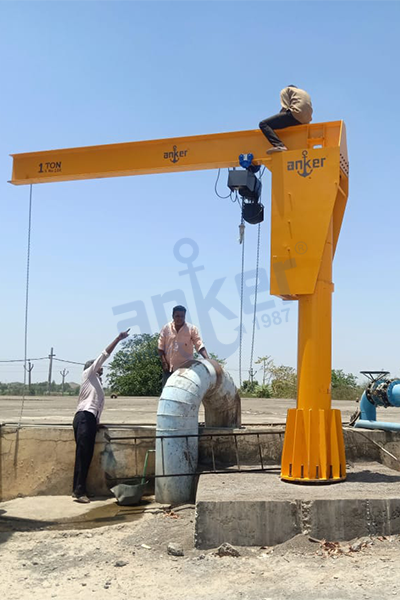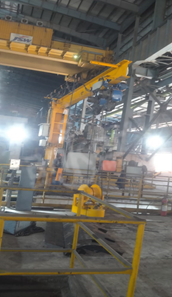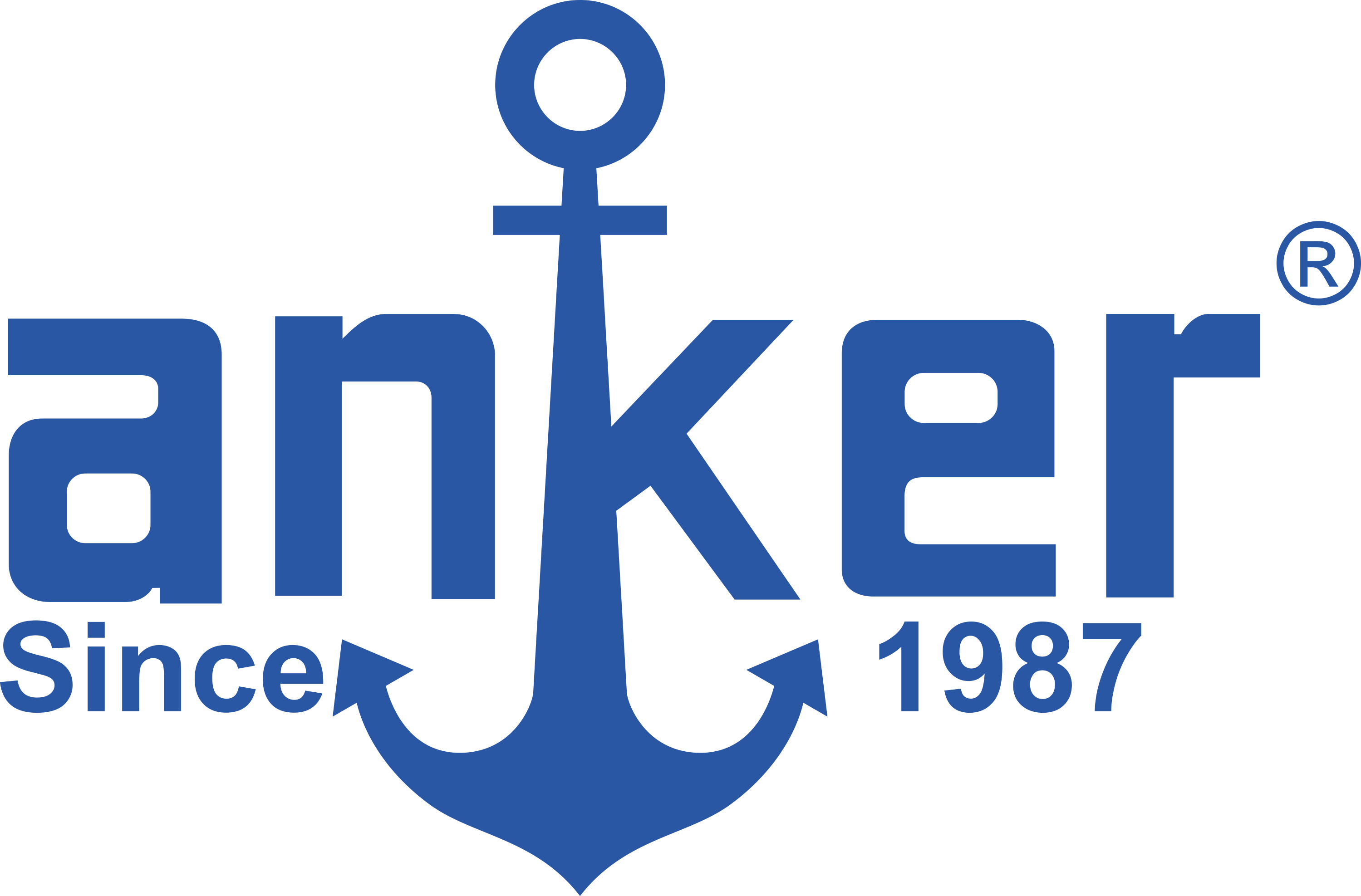Jib Cranes (Upto 10 Tons)
Home / Jib Cranes (Upto 10 Tons)


Jib Crane is a type of overhead lifting device that is often used in small work areas for repetitive and unique lifting tasks. It has a horizontal beam called a jib or jib-arm that supports the load and can rotate over a circular area. A jib crane can have different types, components and configurations on the application and environment.
Mounted on a floor or foundation and have a vertical mast or pillar that supports the jib arm. They can rotate upto 360 degrees and have a high hook height.
Mounted to a wall or column and have a cantilevered jib arm that extends horizontally. They can rotate 180 to 200 degrees and have a low headroom requirement.
These have two jib arms that are connected by a hinge or pivot point, allowing them to bend around obstacles or reach into confined spaces. They can have either floor or wall mounting options.
Some of the common components of jib cranes are:
The horizontal beam that the trolley travels back and forth on.
Jib Cranes are commanly used for Manufacturing to lift and move materials, parts, tools or finished products in assembly lines, workstations, warehouses or workshops and for maintenance to lift and move machinery, vehicles, engines, motors or components in repair shops, garages or service centers.
The vertical beam used to support the jib arm on free standing and mast type jib cranes
The device that lifts, positions, and lowers the load using a wire rope or chain and a hook.
The device that carries the hoist along the length of the boom. It can be manual or motorized.
The movement of the jib arm around its axis – which can be manual or motorized.
Jib Cranes are maximally used for light loads upto 5T and spans usually upto 6 mtrs. Chain Hoists are prefered as Hoisting mechanisms for this application. Some of the advantages of Jib Cranes are:
- They are flexible and versatile cranes used frequently for varied needs in industrial applications
- They are easy to install and operate as they do not require a large foundation or complex wiring. They can be mounted on walls, columns or floors depending upon available space and the load capacity.
- They are cost-effective and efficient, as they reduce the need for multiple cranes or forklifts in a facility. They also save time and energy by minimizing the travel distance and the handling of loads.
- They are safe and reliable, as they have a low risk of tipping over or colliding with other objects.
- Jib cranes are designed and manufactured according to the specific requirements of each customer, taking into account factors such as load capacity, span, lifting height, space availability, speed, duty cycle, and environmental conditions.
- Robust structural design having optimized structural weight matched by skilled workmanship
- Stabilized structural assembly by virtue of adequate length of jib post
- Optimally designed main girder having maximum rigidity & strength
- Crane components offering high operating safety and reliability
- Crane manufactured with with perfection in span & diagonal measurements in precise mechanical engineering tolerances to avoid skewing – resulting in minimum wear & tear
- Crane components offering high operating safety and reliability
- Travel Wheels are duly hardened and tempered made of Carbon steel thus increasing life
- Modular design of Hoist enables ease of Maintenance
- Gears & axles made of high strength chrome manganese alloy steel material
- Improved Hook approach
- CT Power and Control Supply transmission through Drag Chain or independent C track trailing cabling system along the crane girder for ease of operation
- Customizable maintenance platform for maintenance of LT Motor / Panel
- Every motion is equipped with electromagnetic braking mechanism
- Operational control with option of Pendent push button or radio remote control
- All supply cables provided with protective earth conductor.
- Variable options of rotational and cross travel speeds for customized solutions
- Can be supplied with a Articulated arm to operate in space constraints
- Two stage Limit Switches – to reduce abrupt stoppage of load
- Electromechanical overload device to increase safety
- Frequency drives for varied speeds – fast and slow in hoisting, cross travel and long travel as per Customer requirements
- Radio remote control for operation at a safe distance
- Load display at Hook point for lifted load information.
